Many people wonder how the magnificent cenotes we know today were actually formed.
Thick layers of limestone, created from marine organisms, gradually accumulated over time and formed a vast platform. When the sea level dropped, this platform became exposed.
The porous limestone was then slowly eroded by slightly acidic rainwater, leading to the formation of a vast network of underground caves.
Over time, some of the ceilings of these caverns collapsed, revealing the cenotes as we know them today.
This natural phenomenon, known as karstification, took place over millions of years, gradually shaping one of the most fascinating landscapes of the Yucatán.
Contrary to what one might think, their formation did not happen in just a few years, but through a slow and patient geological process that unfolded over millions of years.
What is a cenote ?
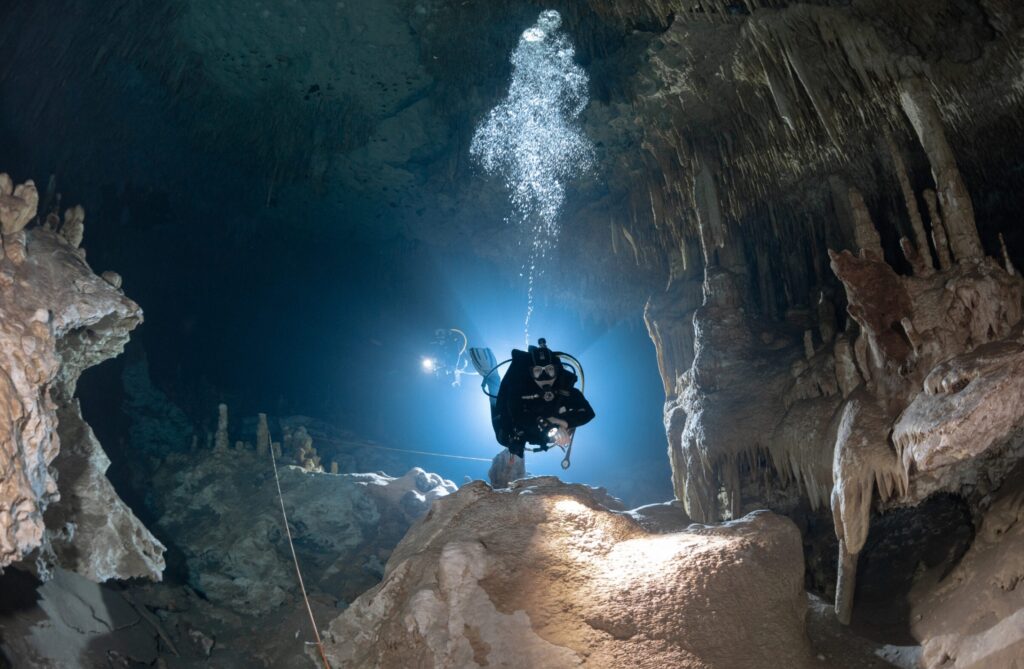

Cenotes are natural sinkholes, also known as dolines, typically found in limestone regions, especially in Mexico’s Yucatán Peninsula. Their formation is the result of a long geological process that spans millions of years and involves several key stages.
The role of limestone layers in the formation of cenotes
It is mainly due to the abundance of limestone that so many cenotes can be found in the Yucatán Peninsula.
When sea levels dropped, the limestone bedrock was exposed to open air, making it more vulnerable to erosion caused by rainwater.
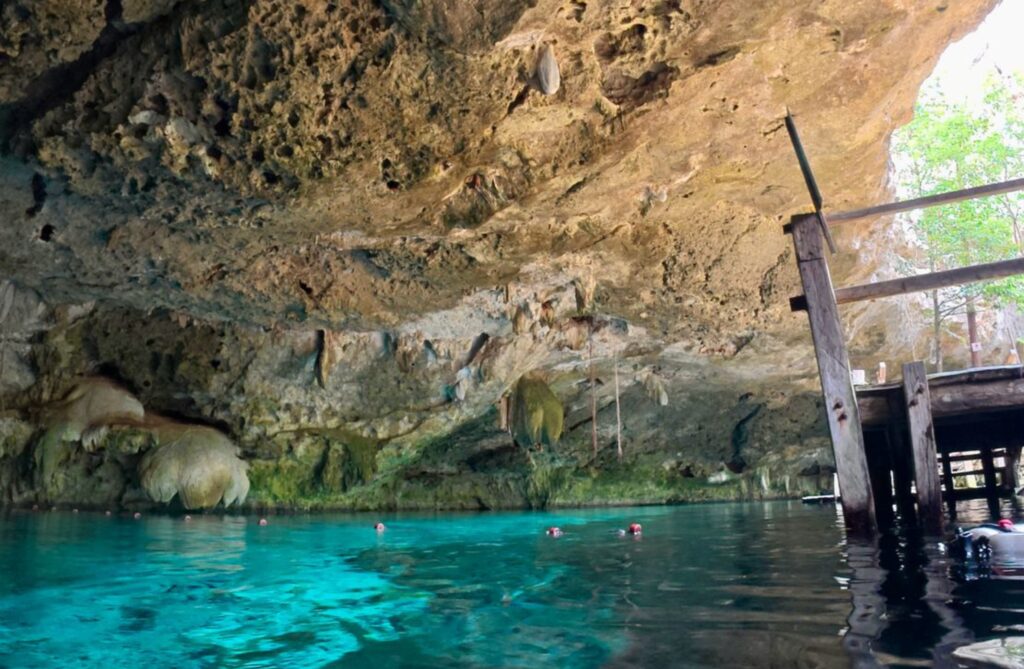
But Cyril, what is limestone?
Limestone is a sedimentary rock mainly composed of calcium carbonate (CaCO₃), and sometimes also magnesium carbonate (MgCO₃).
It is easily recognized by its white color and often by the presence of fossils.
It typically forms through the accumulation of shell fragments, marine organism skeletons, or by chemical precipitation in aquatic environments. This type of rock dissolves when it comes into contact with slightly acidic water.
Over thousands of years, this interaction between water and rock has led to the formation of vast networks of caves and sinkholes.
Why is the water in cenotes so clear?
What makes cenote diving especially appealing is the incredible clarity of the water.
The water in cenotes is so clear because the limestone acts as a natural filter, trapping impurities. The result is exceptionally transparent water, perfect for diving.

The purity of cenote water allows for visibility of up to 30 meters, giving divers a perfectly clear view of the rock formations and the underwater play of light.
For some divers, understanding how cenotes were formed helps them realize that diving in a cenote isn’t just about swimming in a pool of water or exploring a cave. It’s about immersing yourself in a place rich with geological history, shaped by nature over millions of years.
The impact of water in the formation of cenotes
Rainwater, slightly acidic due to the carbon dioxide present in the atmosphere, gradually seeped into the cracks of the limestone rock.

Over time, this interaction slowly dissolved the rock, forming a vast network of caves and underground rivers.
This phenomenon is known as karstification.
The collapse of the ceilings and the birth of the cenotes
When the ceiling of these caves became too thin to support its own weight, some cavities collapsed, creating a direct opening to the water table or underground rivers. This is how cenotes were born.
Depending on the extent of the collapse, different types of cenotes were formed: open, semi-open, and closed cenotes.
The different types of cenotes
Cenotes, the iconic freshwater sinkholes of the Yucatán Peninsula, are mainly distinguished by their shape, exposure to light, and stage of geological evolution. They are generally categorized into four main types.
Open cenote
This type of cenote is completely exposed at the surface, often circular or oval in shape, and resembles a natural pond.
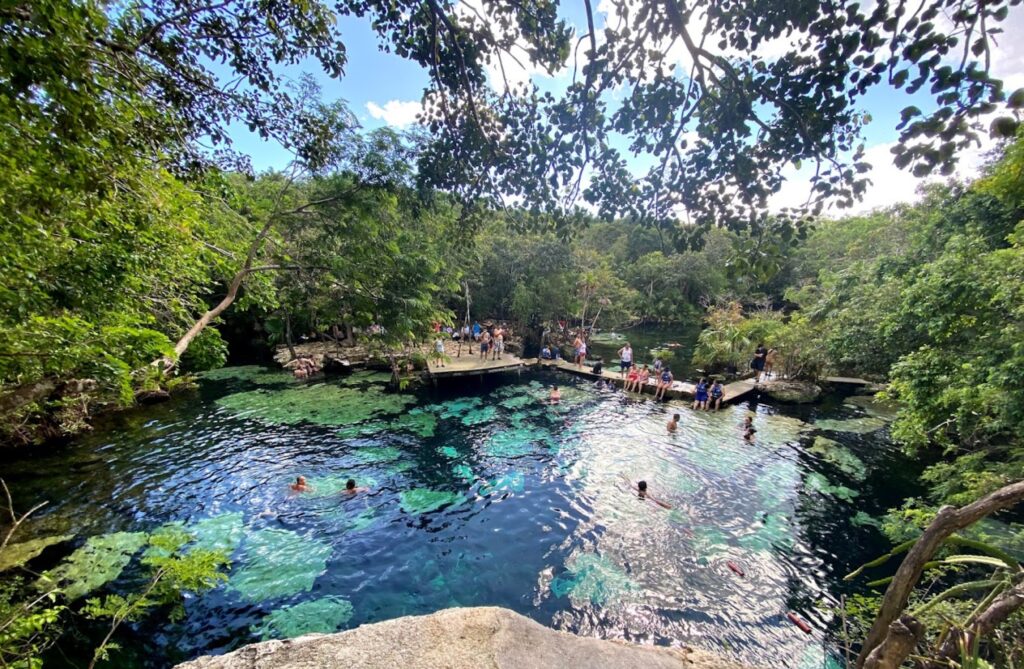
These cenotes receive maximum sunlight, which encourages the growth of vegetation and aquatic life.
Among the most popular open cenotes are Cenote Azul and Cenote Jardín del Edén.
Semi-open cenote
This type of cenote has a partial opening to the outside, allowing sunlight to enter while still retaining part of its rocky ceiling.
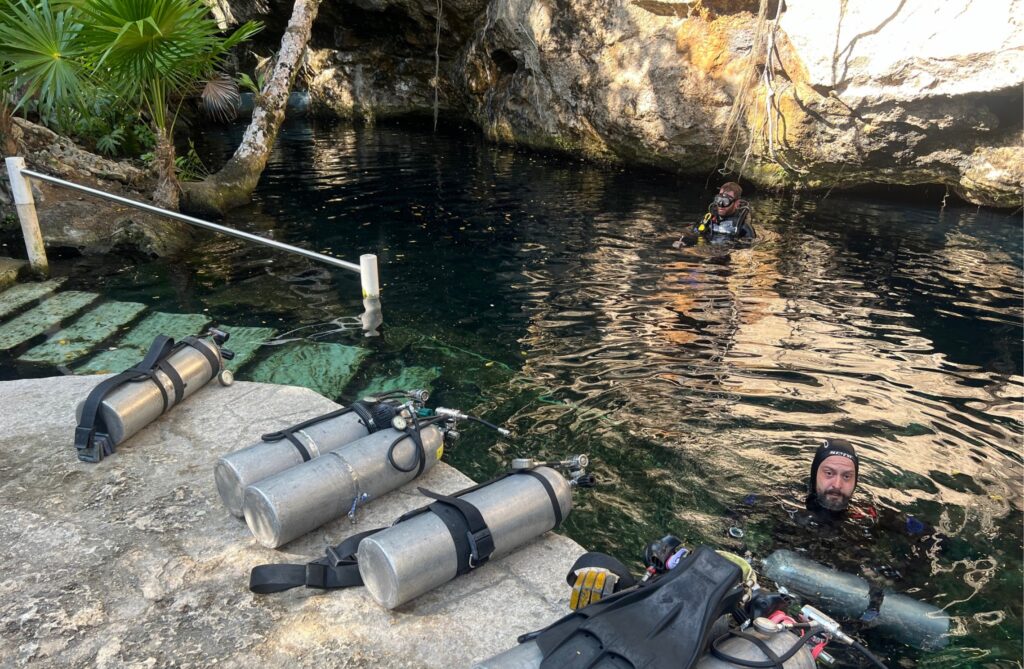
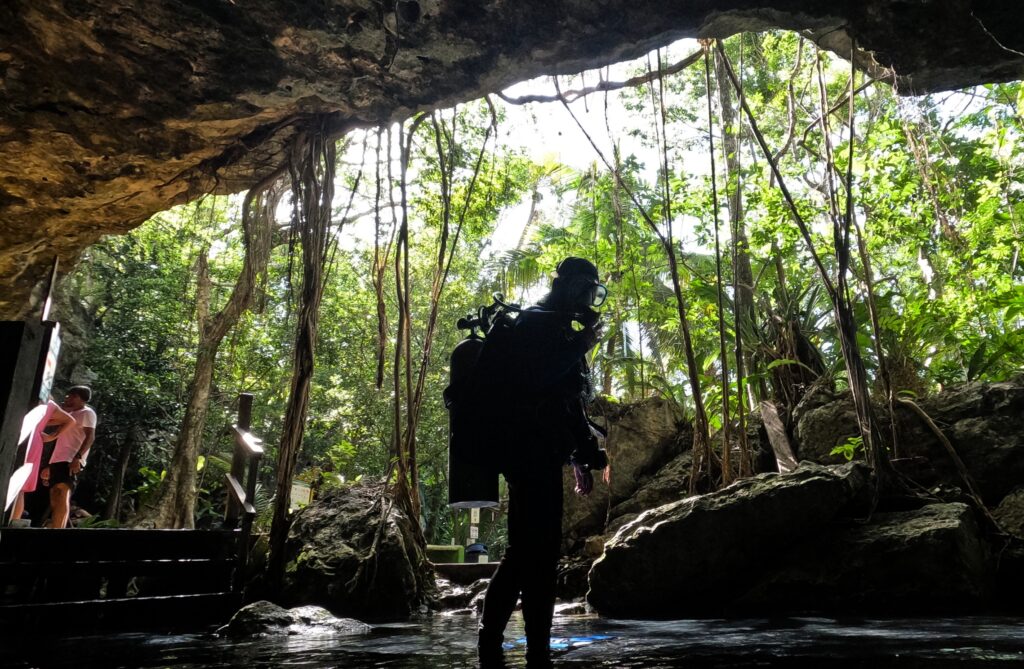
Access is often through a small opening, and the sunlight creates spectacular patterns of light and shadow on the water.
Among the semi-open cenotes are Dos Ojos and Chac Mool, two well-known and highly appreciated sites for cenote diving.
Closed cenote
Entirely underground, this cenote appears as a cave with a typically narrow entrance.
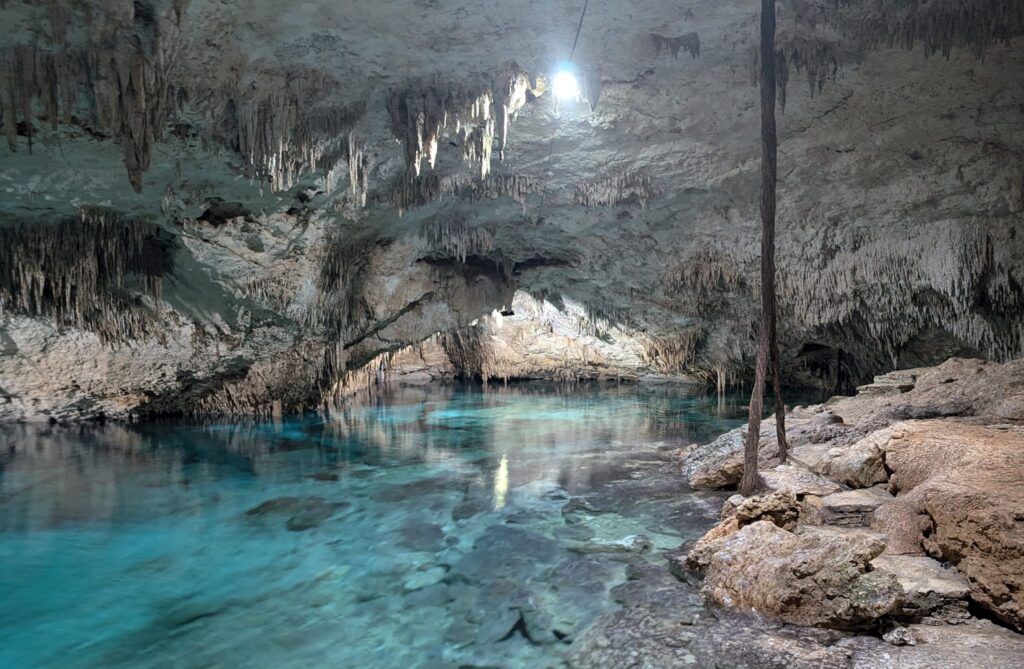
Very little light enters, creating a mysterious atmosphere with turquoise or emerald green waters, often adorned with stalactites and stalagmites.
Among the closed cenotes is the famous Taak Bi Ha cenote.
Each type of cenote offers a unique experience, whether for swimming, diving, or exploring local geology and biodiversity.
What can we see in cenotes?
Contrary to what many people think, it is possible to observe a wide variety of things in cenotes.
These natural sinkholes offer a fascinating display where nature, wildlife, and history come together. Their crystal-clear water allows for an exceptionally clear view of the underwater formations.
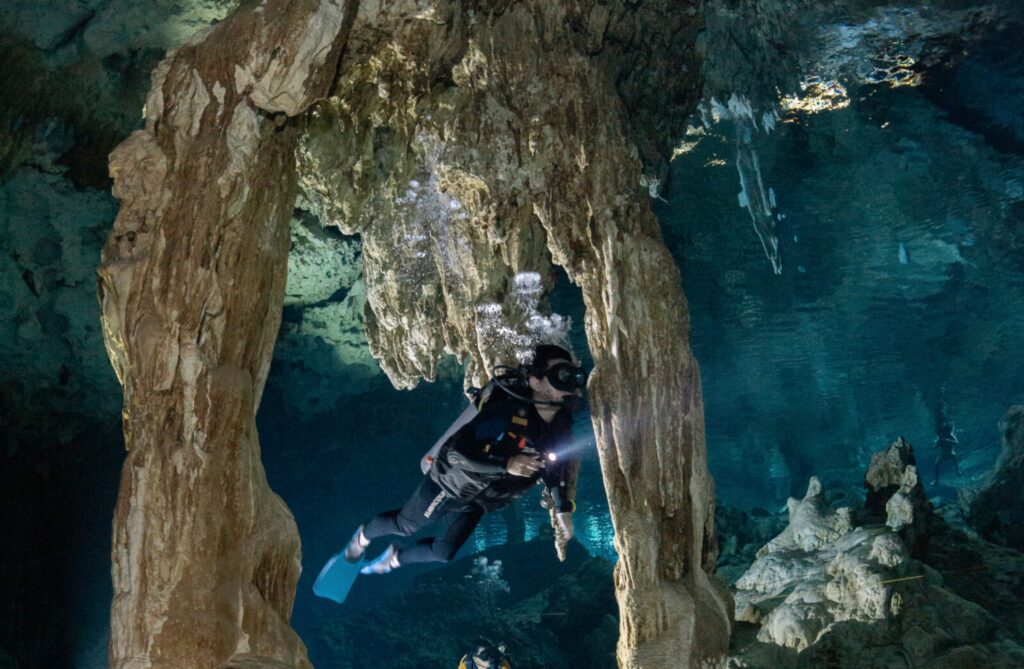
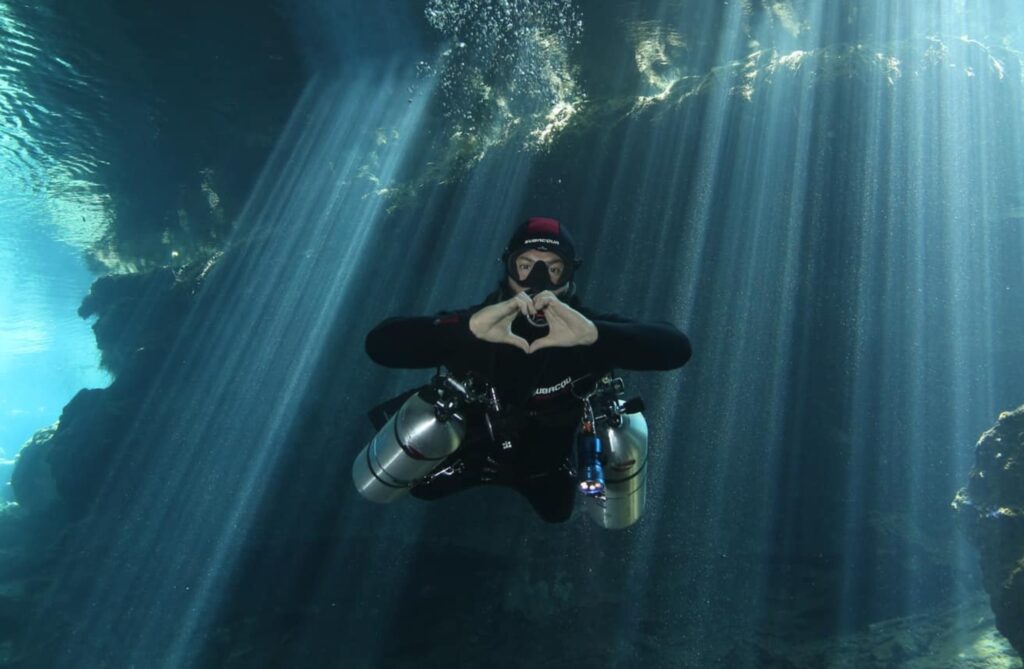
In caves or semi-open cenotes, visitors can admire stunning formations of stalactites and stalagmites.
The biodiversity is also remarkable. You can find a wide variety of fish, turtles, and even unique microorganisms found nowhere else in the world.
Beyond the natural aspect, what I find most impressive in a cenote is its atmosphere, enhanced by the light filtering through the openings. The light illuminates the water and the walls, creating an almost surreal spectacle.
Some of these places, steeped in history, have even revealed major archaeological remains, reminding us of their sacred role in the Mayan civilization.

